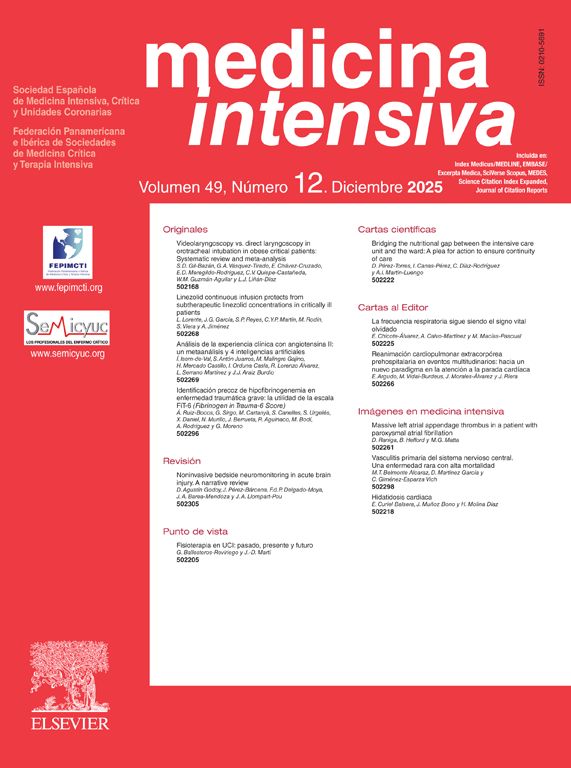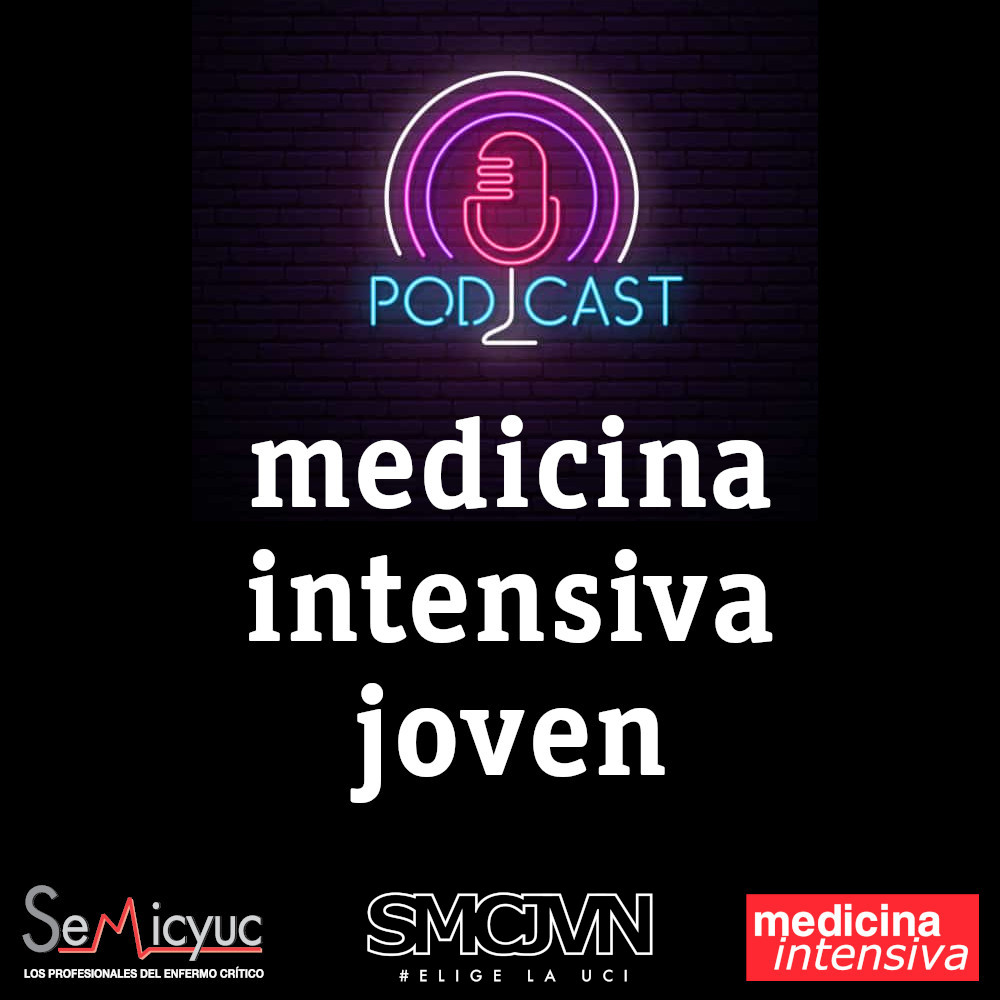Patient admitted to the ICU due to SARS-CoV-2-induced pneumonia who required mechanical ventilation and was transferred to one of the hospital conventional wards after 14 days at the ICU treated with anticoagulant therapy with enoxaparin. He was readmitted due to respiratory failure. The CAT scan performed revealed the presence of thrombi in segmental arteries of both the right superior and left inferior lobes. The transesophageal echocardiogram performed revealed the presence of dense, spontaneous echocontrast in the right chambers (Appendix B; video 1 and Fig. 1). After the new hospital discharge, the patient showed low level of consciousness. The cranial CAT scan performed revealed the presence of an infarction at right medial cerebral artery level while the transesophageal echocardiogram performed revealed the presence of a coumadin ridge (variant of normality) with attached thrombotic material (Appendix B; video 2 and Fig. 2), and lack of cardiac shunt (Appendix B; video 3). A sequela of left residual hemiparesis remained at the ICU discharge. This is a clear example that the infection due to COVID-19 increases the risk of thromboembolic events.
El factor de impacto mide la media del número de citaciones recibidas en un año por trabajos publicados en la publicación durante los dos años anteriores.
© Clarivate Analytics, Journal Citation Reports 2025
SJR es una prestigiosa métrica basada en la idea de que todas las citaciones no son iguales. SJR usa un algoritmo similar al page rank de Google; es una medida cuantitativa y cualitativa al impacto de una publicación.
Ver másSNIP permite comparar el impacto de revistas de diferentes campos temáticos, corrigiendo las diferencias en la probabilidad de ser citado que existe entre revistas de distintas materias.
Ver más







